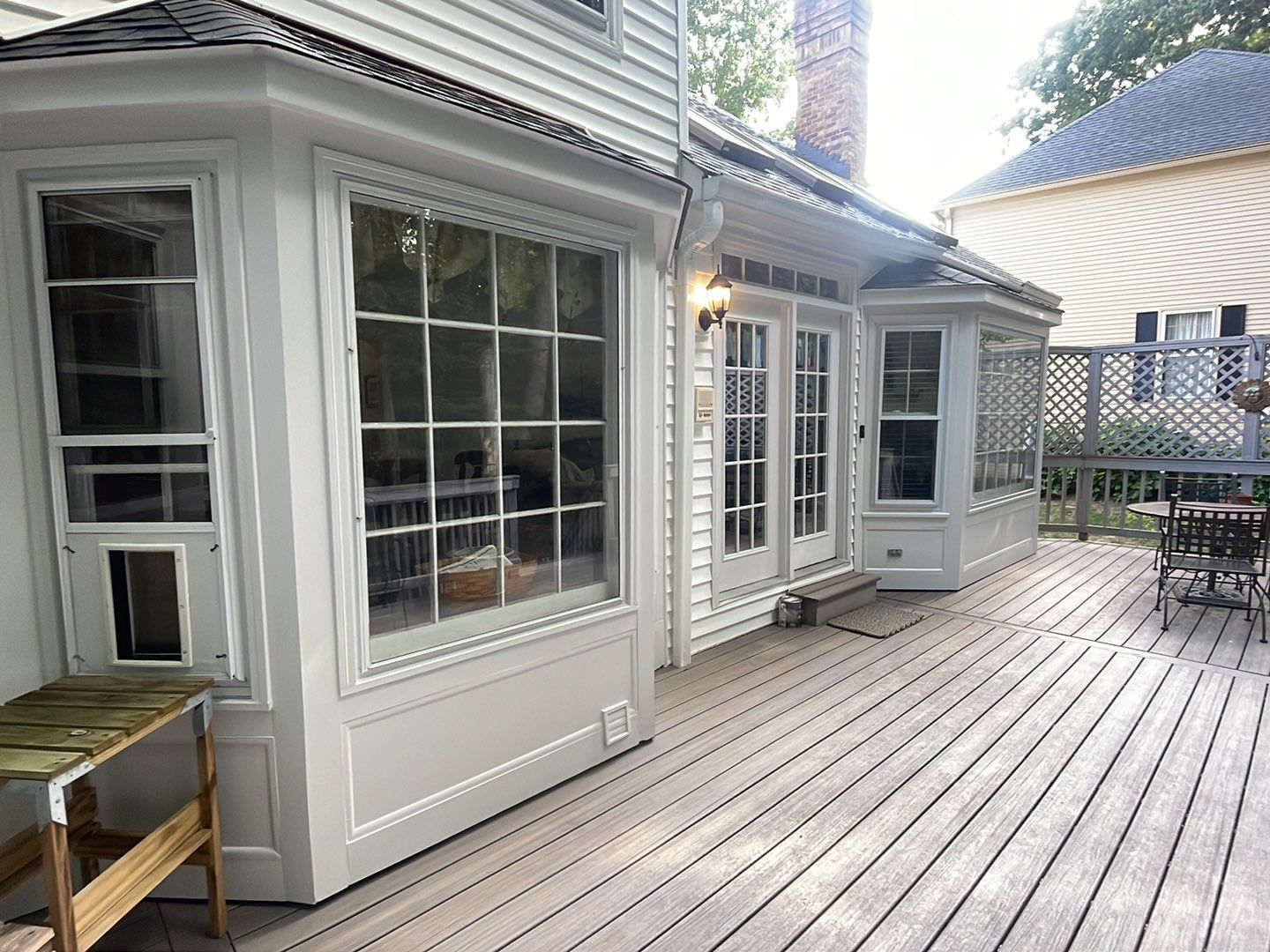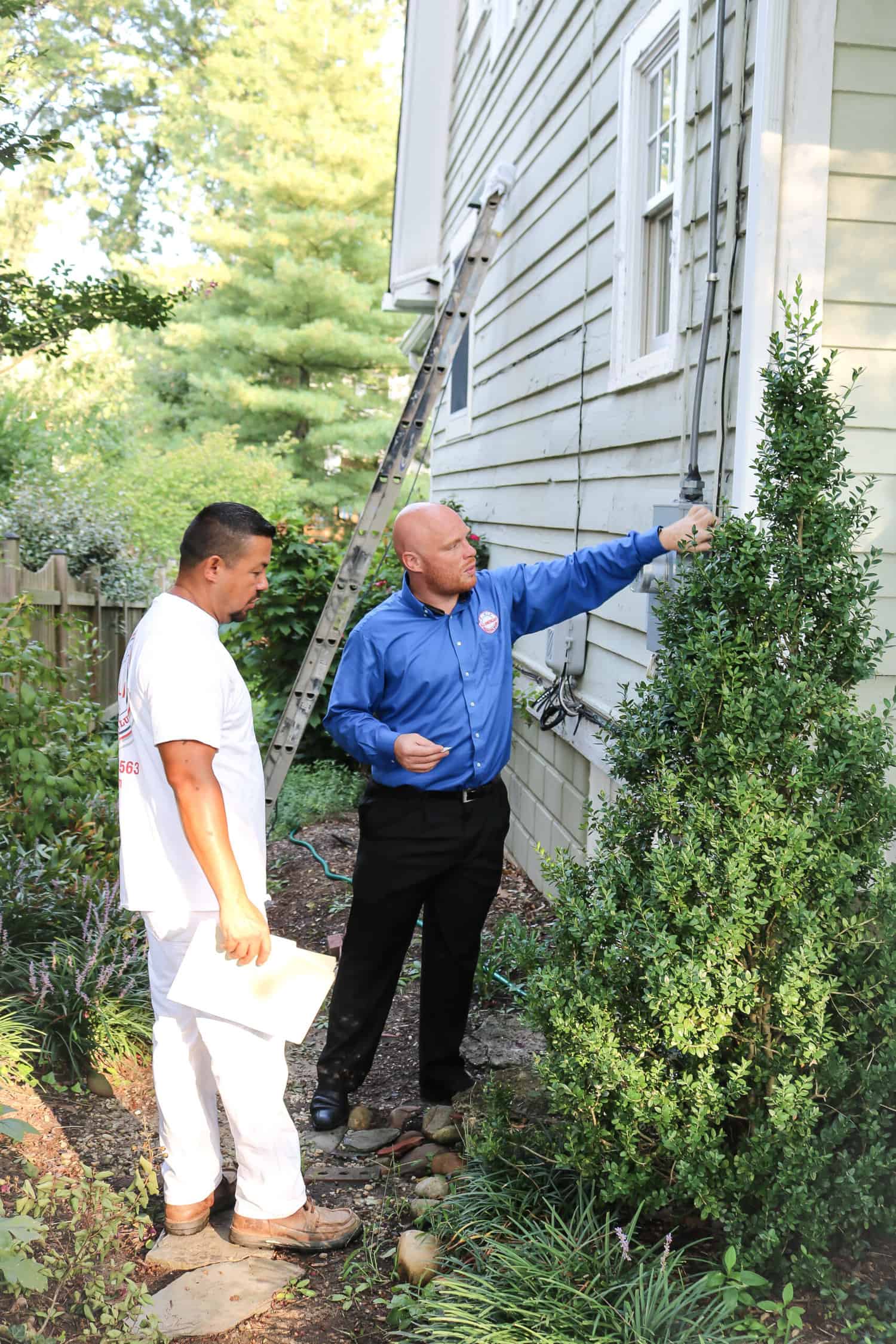No matter how solid your home’s exterior painting job is, after enough exposure to the elements, your wooden features may begin to deteriorate and possibly rot. You can prevent rotted wood by cleaning, painting, staining, and sealing wooden surfaces on a routine basis. Despite your best efforts, however, you may still come across rot at some point. Ignoring the issue can pose a number of health and safety hazards, so you have to do something.
When faced with rotted wood, you can either repair the affected areas or replace them. But how do you make this call? Let’s go over some of the factors that can help you decide whether to repair or replace your rotted wood.
How Severe is the Damage?
First, try to determine how deep and widespread the wood rot is. You can do this by taking a screwdriver or other firm, pointy object and inserting it into the wood. If it goes through the material with little resistance, you’ve got serious rot.
Of course, this rot may be isolated, only affecting a small area of the wood. If that’s the case, you can usually get away with repairing this section, leaving the rest alone. However, if a significant portion of a wooden feature is rotten, you’re better off replacing it entirely. This will give you a brand new start.
Is the Wood Structurally Important?
In terms of your home’s structural integrity, some wooden features are more important than others. If, for instance, you have rot in your wooden deck’s support beams you need to address the issue immediately so the foundation doesn’t collapse. For structurally significant wood like this, replacement is often the safest and most practical option, even if the rotted area is small.
For aesthetic wooden features such as trim and decorative carpentry, replacement is an option but less of a necessity. Since these features don’t have structural implications, you can usually repair them with relative ease. Professional carpenters will typically use a polyester filler and wood hardener to repair the affected areas after removing the rot. Then, home painters can paint or stain the newly repaired area to make it look seamless.
Cost Considerations
Safety should always be your top priority, but you may also have budgetary concerns when it comes to home improvement. Keeping cost in mind can help you decide whether to have your wood repaired or replaced. Both jobs require the time and effort of professional contractors, but a replacement job may be more involved than a repair job.
Rotted wood repair usually involves removing a small area of wood and filling the missing areas with a synthetic compound. For wood replacements, carpenters must craft a new wooden feature of the same material, size, and shape to replace the one that was removed. Then, they must install the new object(s) and professional painters must coat the new area with paint or stain to make everything blend. Generally speaking, wood replacement will cost a bit more than wood repair. But it all depends on the contractor you hire and the severity of the damage.
Ask the Experts
If you’re still uncertain about whether your rotted wood needs repairs or replacement, turn to the pros for their opinion. The residential painting professionals at All American Painting Plus have years of experience inspecting, assessing, repairing, and replacing rotted wood. Not only can our team help you identify wood rot, we can also repair or replace it after deciding which option is right for you. Then, you can rely on our painting services to complete the job and make your wooden features look as good as new.
Have you checked your home for rotted wood lately? Stay on top of this routine maintenance to keep your home safe and beautiful. If you think you have rot, reach out to All American Painting Plus. To learn more about all that we can do for our clients in Northern Virginia, give us a call at (703)-620-5563!











